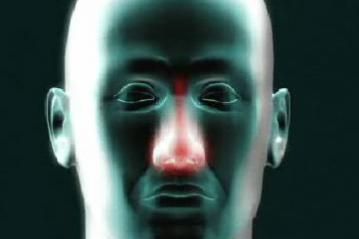Food allergies occur when the immune system identifies the proteins in a particular food as harmful to the body, subsequently reacting to try to "fight off" the "harmful" proteins (which are in fact harmless). A chocolate allergy is uncommon, though possible. No extensive research has been done on people with chocolate allergies. Often when people have an adverse reaction to eating chocolate, they (and even their doctors) assume it is a chocolate allergy when it might be something else.
One common chocolate allergy symptom is headache or migraine. Other possible symptoms include itching or swelling of the mouth, tongue or lips; skin reactions, such as eczema, hives, swelling and redness of the extremities or face; gastrointestinal symptoms, such as abdominal pain, nausea, vomiting and diarrhea; respiratory symptoms, such as runny or stuffy nose, coughing, sneezing, wheezing and difficulty breathing; and cardiovascular symptoms, such as drop in blood pressure, lightheadedness and fainting.
Advertisement
If you experience any of these symptoms after eating chocolate it might not necessarily indicate a chocolate allergy. It is more likely either another food allergy or a chocolate intolerance. The most common food allergens, which make up 90 percent of food allergies, include milk, eggs, peanuts, tree nuts and wheat. It is possible that the chocolate you ate might contain one or more of these ingredients, even in trace amounts (such as a nut-free chocolate bar that was processed on the same machinery that was used to make chocolate bars containing nuts). You may actually be allergic to one of the other ingredients and that might be what you are reacting to.
Symptoms of food intolerance are similar to symptoms of an allergy, but intolerance is related to a deficiency in your gastrointestinal system and has nothing to do with your immune system. The only way to confirm a chocolate allergy is to go to an allergist and get tested. The best test is a double-blind placebo-controlled food challenge. Once your allergist has diagnosed the issue he can decide on the best course of treatment.
Advertisement

